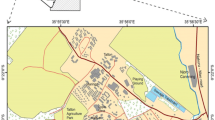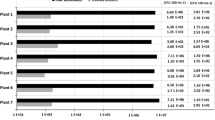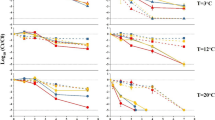Abstract
Biofilters are widely adopted in Australia for stormwater treatment, but the reported removal of common faecal indicators (such as Escherichia coli (E. coli)) varies from net removal to net leaching. Currently, the underlying mechanisms that govern the faecal microbial removal in the biofilters are poorly understood. Therefore, it is important to study retention and subsequent survival of faecal microorganisms in the biofilters under different biofilter designs and operational characteristics. The current study investigates how E. coli survival is influenced by temperature, moisture content, sunlight exposure and presence of other microorganisms in filter media and top surface sediment. Soil samples were taken from two different biofilters to investigate E. coli survival under controlled laboratory conditions. Results revealed that the presence of other microorganisms and temperature are vital stressors which govern the survival of E. coli captured either in the top surface sediment or filter media, while sunlight exposure and moisture content are important for the survival of E. coli captured in the top surface sediment compared to that of the filter media. Moreover, increased survival was found in the filter media compared to the top sediment, and sand filter media was found be more hostile than loamy sand filter media towards E. coli survival. Results also suggest that the contribution from the tested environmental stressors on E. coli survival in biofilters will be greatly affected by the seasonality and may vary from one site to another.







Similar content being viewed by others
References
Alexander M (1981) Why microbial predators and parasites do not eliminate their prey and hosts. Annu Rev Microbiol 35:113–133
APHA/AWWA/WPCF (2005) Standard methods for the examination of water and wastewater, 21st edn. American Public Health Association/American Water Works Association/Water Pollution Control Federation, Washington, USA
ARPANSA (2013) Australian Radiation Protection and Nuclear Safety Agency. http://www.arpansa.gov.au/uvindex/monthly/melmonthlysumm.htm. Accessed 28 May 2013
ASTM D 2974 standard test methods for moisture, ash, and organic matter of peat and other organic soils. American Society of Testing and Materials. doi:10.1520/D2974
Bitton G, Gerba CP (1984) Microbial pollutants: their survival and transport pattern to groundwater. In: Bitton G, Gerba CP (eds) Groundwater pollution microbiology. Wiley, New York, pp 65–88
Bratieres K, Fletcher TD, Deletic A, Zinger Y (2008) Nutrient and sediment removal by stormwater biofilters: a large-scale design optimisation study. Water Res 42(14):3930–3940
Bratieres K, Fletcher TD, Deletic A (2009) The advantages and disadvantages of a sand-based biofilter medium: results of a new laboratory trial. Paper presented at the 6th international water sensitive urban design conference, Perth, Australia, 5–8 May 2009
Chandrasena GI, Deletic A, Ellerton J, McCarthy DT (2012) Evaluating Escherichia coli removal performance in stormwater biofilters: a laboratory-scale study. Water Sci Technol 66(5):1132–1138. doi:10.2166/wst.2012.283
Clapp RB, Hornberger GM (1978) Empirical equations for some soil hydraulic properties. Water Resour Res 14(4):601–604
Cosby BJ, Hornberger GM, Clapp RB, Ginn TR (1984) A statistical exploration of the relationships of soil moisture characteristics to the physical properties of soils. Water Resour Res 20(6):682–690
Crane SR, Moore JA (1986) Modeling enteric bacterial die-off: a review. Water Air Soil Pollut 27(3–4):411–439
Davis AP, McCuen RH (2005) Stormwater management for smart growth. Springer, Boston
FAWB (2009) Adoption guidelines for stormwater biofiltration systems. June 2009 edn. Facility for Advancing Water Biofiltration, Monash University
Ferguson C, de Roda Husman AM, Altavilla N, Deere D, Ashbolt N (2003) Fate and transport of surface water pathogens in watersheds. Crit Rev Environ Sci Technol 33(3):299–361
Garzio-Hadzick A, Shelton DR, Hill RL, Pachepsky YA, Guber AK, Rowland R (2010) Survival of manure-borne E. coli in streambed sediment: effects of temperature and sediment properties. Water Res 44(9):2753–2762
Gavlak R, Horneck D, Miller RO, Kotuby-Amacher J (2003) Soil, plant and water reference methods for the western region. 2nd edn. WREP 125 (WCC-103)
Habteselassie M, Bischoff M, Blume E, Applegate B, Reuhs B, Brouder S, Turco RF (2008) Environmental controls on the fate of Escherichia coli in soil. Water Air Soil Pollut 190(1–4):143–155. doi:10.1007/s11270-007-9587-6
Hathaway J, Hunt W, Graves A, Wright J (2011) Field evaluation of bioretention indicator bacteria sequestration in Wilmington, North Carolina. J Environ Eng 137(12):1103–1113. doi:10.1061/(ASCE)EE.1943-7870.0000444
Hatt BE, Fletcher TD, Deletic A (2008) Hydraulic and pollutant removal performance of fine media stormwater filtration systems. Environ Sci Technol 42(7):2535–2541
Hatt BE, Fletcher TD, Deletic A (2009) Pollutant removal performance of field-scale stormwater biofiltration systems. Water Sci Technol 59:1567–1576
IDEXX-Laboratories (2007) Colilert® Test Kit. IDEXX-Laboratories, Maine, USA
Ishii S, Ksoll WB, Hicks RE, Sadowsky MJ (2006) Presence and growth of naturalized Escherichia coli in temperate soils from Lake Superior watersheds. Appl Environ Microbiol 72(1):612–621
Li H, Davis AP (2009) Water quality improvement through reductions of pollutant loads using bioretention. J Environ Eng 135(8):567–576. doi:10.1061/(asce)ee.1943-7870.0000026
McNamara NP, Black HIJ, Beresford NA, Parekh NR (2003) Effects of acute gamma irradiation on chemical, physical and biological properties of soils. Appl Soil Ecol 24(2):117–132. doi:10.1016/s0929-1393(03)00073-8
Moynihan EM (2012) Interactions between microbial community structure and pathogen survival in soils. Cranfield University
Mubiru DN, Coyne MS, Grove JH (2000) Mortality of Escherichia coli O157:H7 in two soils with different physical and chemical properties. J Environ Qual 29(6):1821–1825
NHMRC (2009) Australian guidelines for water recycling (phase 2). Stormwater harvesting and reuse. Natural Resource Management Ministerial Council, Environment Protection and Heritage Council, National Health and Medical Research Council, Canberra
Potts M (1994) Desiccation tolerance of prokaryotes. Microbiol Rev 58(4):755–805
Rusciano GM, Obropta CC (2007) Bioretention column study: fecal coliform and total suspended solids reductions. Trans ASABE 50(4):1261–1269
Solo-Gabriele HM, Wolfert MA, Desmarais TR, Palmer CJ (2000) Sources of Escherichia coli in a coastal subtropical environment. Appl Environ Microbiol 66(1):230–237
Stevik TK, Aa K, Ausland G, Hanssen JF (2004) Retention and removal of pathogenic bacteria in wastewater percolating through porous media: a review. Water Res 38(6):1355–1367
Tindall JA, Kunkel JR (1998) Unsaturated zone hydrology for scientists and engineers. 1st edn. Pearson Education
van Elsas JD, Semenov AV, Costa R, Trevors JT (2011) Survival of Escherichia coli in the environment: fundamental and public health aspects. ISME J 5(2):173–183. doi:10.1038/ismej.2010.80
Willey JM, Sherwood LM, Woolverton CJ, Prescott LM (2011a) Control of microorganisms in the environment. In: Prescott’s microbiology, 8th edn. McGraw-Hill, New York, pp 190–207
Willey JM, Sherwood LM, Woolverton CJ, Prescott LM (2011b) Microbial growth. In: Prescott’s microbiology, 8th edn. McGraw-Hill, New York, pp 155–190
Yates MV, Yates SR (1987) Modeling microbial fate in the subsurface environment. Crit Rev Environ Control 17(4):307–344
Zhang L, Seagren EA, Davis AP, Karns JS (2010) The capture and destruction of Escherichia coli from simulated urban runoff using conventional bioretention media and iron oxide-coated sand. Water Environ Res: Res Publ Water Environ Fed 82(8):701–714
Zinger Y, Blecken GT, Fletcher TD, Viklander M, Deletić A (2013) Optimising nitrogen removal in existing stormwater biofilters: benefits and tradeoffs of a retrofitted saturated zone. Ecol Eng 51:75–82
Acknowledgments
The authors wish to acknowledge the support of Vipin Mehetha, Peter Anthony Koletolo, Catherine Osborne, Christelle Schang and Monash Water for Liveability at Monash University.
Author information
Authors and Affiliations
Corresponding author
Additional information
Responsible editor: Robert Duran
Rights and permissions
About this article
Cite this article
Chandrasena, G.I., Deletic, A. & McCarthy, D.T. Survival of Escherichia coli in stormwater biofilters. Environ Sci Pollut Res 21, 5391–5401 (2014). https://doi.org/10.1007/s11356-013-2430-2
Received:
Accepted:
Published:
Issue Date:
DOI: https://doi.org/10.1007/s11356-013-2430-2




